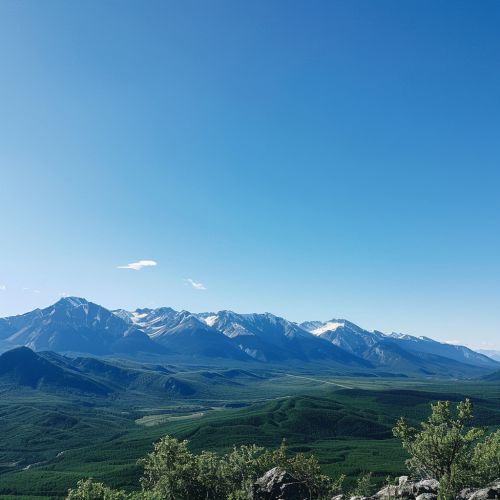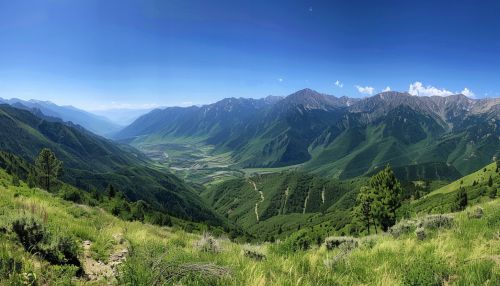Chuska Mountains
Geography
The Chuska Mountains are a mountain range located in the Southwestern United States, spanning the border between Arizona and New Mexico. They form part of the Colorado Plateau, a physiographic region characterized by high deserts and deep canyons. The range runs roughly north-south, with the highest point being Roof Butte at an elevation of 9,800 feet (2,987 meters). The mountains are surrounded by the Navajo Nation, a Native American territory that covers parts of three states.


Geology
The Chuska Mountains are primarily composed of sedimentary rock, including sandstone and shale, with some areas of volcanic rock. The range is part of the larger Colorado Plateau, which was uplifted during the Laramide Orogeny, a period of mountain building that occurred between 70 and 40 million years ago. The mountains are rich in mineral resources, including coal, uranium, and natural gas.
Climate
The climate of the Chuska Mountains is classified as semi-arid, with hot summers and cold winters. Precipitation is relatively low, averaging around 12 inches (30 cm) per year, but the mountains receive more rainfall than the surrounding desert due to their elevation. Snowfall is common in the winter months, providing a source of water for the region.
Flora and Fauna
The Chuska Mountains are home to a diverse range of plant and animal species. The lower slopes are dominated by pinyon-juniper woodland, while the higher elevations support forests of ponderosa pine, Douglas fir, and aspen. Wildlife includes mule deer, elk, black bear, and a variety of bird species, including the endangered Mexican spotted owl.
Human History
The Chuska Mountains have been inhabited by humans for thousands of years. The Ancestral Puebloans, also known as the Anasazi, lived in the region from around 200 AD to 1300 AD and left behind numerous archaeological sites. The mountains are currently part of the Navajo Nation, and are considered sacred by the Navajo people. The range is also significant for its role in the Long Walk, a forced relocation of the Navajo people by the U.S. government in the 1860s.
Economic Importance
The Chuska Mountains are an important economic resource for the Navajo Nation. The range provides timber, grazing land for livestock, and mineral resources. The mountains are also a popular destination for outdoor recreation, including hiking, hunting, and camping.
Conservation
Conservation efforts in the Chuska Mountains are focused on protecting the range's unique ecosystems and cultural resources. The Navajo Nation manages the land with a focus on sustainable use and preservation of traditional practices. Threats to the range include climate change, invasive species, and resource extraction.
